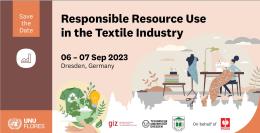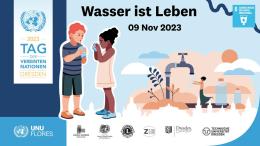This article by John de Boer first appeared on Global Development Think Tank Watch, produced by the Institute for the Study of International Development at McGill University. It is republished here.
The global benchmark for success in international development was set in the year 2000. That was the year world leaders came together at the United Nations and agreed on eight goals and twenty-one measurable and time-bound targets that set the blueprint for confronting the most urgent development challenges of our time. These were the Millennium Development Goals (MDGs), and they are set to expire in 2015.
As the world evaluates to what degree the international effort toward meeting the MDGs has been achieved, numerous reports are being produced to assess progress. Official accounts, such as the annually produced Millennium Development Goals Report or the High-level Panel Report on the Post-2015 Development Agenda, claim “unprecedented progress” in reducing extreme poverty, improving health, decreasing disparities between boys and girls, men and women, and in saving lives. While not all targets have been met, some have been realized well ahead of the 2015 deadline. As efforts intensify in areas where progress has been slow, the United Nations is preparing the stage for a new set of goals — the Sustainable Development Goals — that will build on, and possibly broaden, the collective effort of the past fifteen years.
Are we succeeding?
While it is hard to dispute the UN Secretary-General’s claim that the MDGs have helped to make a profound difference in people’s lives, it is also clear that the job remains unfinished and there are pressing concerns that need to be addressed. On the positive side, the MDGs have contributed to a significant reduction in extreme poverty worldwide and a dramatic increase in access to health and educational services in developing regions. The MDGs also served as an inspirational rallying cry for the whole world (see the High-level Panel Report). Indeed, the MDGs were a useful mobilizing tool to raise a lot of money to tackle pressing global issues. They also led to the forging of new partnerships that were essential to achieving progress. The MDGs also changed minds by influencing how deprivation and human suffering were understood and acted upon. As Zeid Ra’ad Al Hussein, the UN’s High Commissioner for Human Rights, put it in his statement to the UN Human Rights Council on 8 September 2014, “the MDGs popularized the powerful message that development is more than free markets and economic growth. It is about how healthy people are, what kind of education they enjoy, whether they have access to food and live in a healthy environment.” In essence, the MDGs helped forge a multidimensional view of poverty.
Yet, notwithstanding the areas of success, many recognize that the MDGs were incomplete. They did not focus enough on reaching the very poorest. The most obvious evidence for this is that too many people, particularly those living in Sub-Saharan Africa, were left behind. By the UN’s own account, Sub-Saharan Africa as a whole will fail to meet seven out of eight goals if prevailing trends persist. Alarmingly, despite Official Development Assistance (ODA) reaching the highest level ever recorded in 2013 (US$134.8 billion), ODA is shifting away from the poorest countries, most of which are located in sub-Saharan Africa. In fact, net aid to Africa fell by 5.6 percent in 2013. For the SDGs to be successful, they need to change these trends and address the needs of the most vulnerable.
Another acknowledged gap was the fact that the MDGs were silent on the effects of conflict and violence on development. This recognition has led many to advocate for including access to justice, personal security, free speech, and open and accountable government in the upcoming SDGs. The urgency of doing so is underscored by the serious human rights abuses and crimes against humanity witnessed in places such as the Central African Republic, the Democratic Republic of Congo, Iraq, South Sudan, and Syria over the past several years (to name just a few). Adding urgency to this matter is the fact that the number of forcibly displaced persons has tripled since 2010, reaching fifty-one million people. Thirty-three million of these people were uprooted by violence and persecution (see UNHCR report). For the SDGs to succeed where the MDGs fell short, a goal on violence and conflict needs to be included.
Finally, in terms of gender equality and the empowerment of women, the MDGs’ track-record has also been rather dismal. In fact, no region in the world will meet the target of women’s equal representation in national parliaments and only three out of nine regions are projected to meet the target set for women’s share in paid employment (see the MDG 2014 Progress Chart). If the MDGs were to be judged on the basis of promoting equality between men and women, the case for success is harder to defend.
It must be said, however, that our understanding of what exactly has been achieved is limited due to a lack of reliable data. Although the world has witnessed important advancements in the capacity to quantify and qualify development progress at national and international levels since 2000, huge gaps remain in our ability to collect reliable data. This is particularly true with respect to situations affected by conflict and violence. Countries such as Afghanistan, Libya, Myanmar, Papua New Guinea, Somalia, Sudan, South Sudan, Yemen, and Zimbabwe are systematically placed in the category of “no data” in tables depicting the state of global development (see global poverty data maps from OPHI, SEDAC, andthe World Bank). The implication is that we have no real sense of the scale of the challenges faced by people in these countries, and no clear evidence base upon which to judge failure or success. The Post-2015 High-level Panel Report acknowledged as much when it said that “new ways for measuring success are required to be sure that our actions are helping the neediest and most vulnerable”.
What does this mean for the SDGs?
Today’s world is faced with unprecedented global challenges, particularly with respect to climate change and urbanization. This reality is further complicated by the enduring effects of the global economic crisis, the impact of humanitarian catastrophes, health epidemics, and the devastating consequences of violent conflict. The task ahead of us is a difficult one. The likelihood of success is limited. Furthermore, the threats that face humanity are multiple, often intertwined, and unpredictable. A narrow set of goals that remains silent on violence and conflict, fails to address the needs of the poorest, and neglects to make an irreversible impact on gender equality and empowerment, will not be considered a success. The SDGs will need to be bold, adaptable, and above all, focus on helping the most vulnerable.
As the world prepares to assess progress against the MDGs and gathers momentum to define the Sustainable Development Goals, global leaders would be wise to take note of the advice given by the great authority on war and international politics, Sir Lawrence Freedman. In his book on Strategy and in a recent talk delivered at the United Nations University, Freedman demonstrated how the world of strategy can be full of disappointment and frustration if it does not take into account the inherent unpredictability of our environment. The elements of a successful strategy, according to Freedman, are to begin with humility, incorporate contingency plans, refrain from planning too far ahead, and abstain from promising miracles that have a low likelihood of being achieved.
While total success in the world of international development is freeing the world from want and from fear, we must refrain from promising miracles and setting ourselves up for failure. We need to be humble, build on the solid foundation created by the MDGs, fill the gaps highlighted above, and set concrete and realistic goals that consistently promote human dignity, equality, and equity. If we manage to do so, I think that we can all agree that while total success may be unreachable, significant and sustainable progress toward that goal can be achieved.



